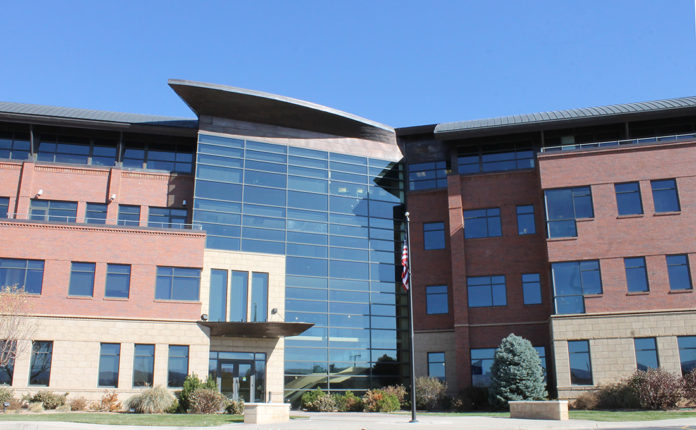Retail background music turned to all-holiday a couple of weeks ago. Of particular resonance for employees of the Bureau of Land Management might be the corny tune made famous by Bing Crosby — “I’ll Be Home For Christmas.”
Yes, the running soap opera of BLM continues.
Recall the Trump administration announced in July 2019 it would move BLM headquarters from Washington, D.C. — actually, Falls Church, Virginia — to Grand Junction, Colorado. The move took a year. Stated purpose? Move the policy-making people out west, closer to the bulk of the 245 million acres of land they oversee. As Federal News Network reported, lots of people left the agency. According to a new assessment by the Government Accountability Office, that’s not only what was going on.
BLM, under then-Interior Secretary David Bernhardt, also did a fair amount of consolidating. Its six directorates with 25 divisions fell to five directorates with 20 divisions. Some of this was well received by career staff. Some moves caused confusion and created functional mismatches.
All in all, good reasons for angst and consternation. People generally don’t like change, especially if it involves a non-voluntary, 2,000-mile move.
The upshot? Of 328 positions relocated to Grand Junction, only three people actually ended up going there. As Don Rickles might have said, what’s their problem? Maybe they like fly fishing or mesas. GAO noted that headquarters already had some 125 vacancies when Bernhardt announced the move. All was not well in the house of BLM to begin with. It also chided BLM for not doing a particularly good job of tracking vacancies. Since then, the agency has hobbled along with vacancies and detailees. GAO and Secretary Deb Haaland say a lot of institutional knowledge left.
At least that’s the official line. But here’s the thing. BLM by GAO’s count has 8,800 other employees out in its many field offices. A press release about the return of headquarters to Falls Church cited 7,000.
7,000, 8,000, 9,000 — whatever the actual number, I’m betting they collectively know a thing or two.
Will the couple of hundred HQ people who left come back? Who knows.
But here are a couple of odd wrinkles in Haaland’s re-relocation plan.
One, Haaland cites the need to “maintain and increase access for stakeholders.” Translation: Lobbyists. That’s who visits headquarters. I don’t say that cynically. Indian tribal leaders, extraction companies and landowners may deal with the field offices. But national policy is a headquarters thing. She can certainly make the argument to have policy made in the D.C. region. It’s where the policy interests — lobbyists, trade groups, and Congress — mostly live and operate.
The wrinkle is this: Didn’t the pandemic disprove the absolute need for physical proximity of people to get work done? Presuming they have broadband in Colorado, what difference does it make where a lobbyist and a lobbyee are located?
Wrinkle two: The spiffy brick-and-glass Horizon Drive building in Grand Junction won’t empty out, undoing the Trump-Bernhardt move. No sirree. To the contrary, Interior states, “BLM’s current presence in Grand Junction, Colo., will grow and expand as the bureau’s official Western headquarters.” A natural question: If nobody wanted to move to Grand Junction then, why would they want to now?
Grand Junction looks like a splendid little city. But it’s out there. An analogy: From Falls Church, if you want see a Washington Wizards game, you can hop on Metro (that’s another story) and get off 50 feet from the door of the arena a half hour later. If you live in Grand Junction, you’ve got a four hour drive to go see the Nuggets. Prefer the Jazz? Four-and-a-half hours to Salt Lake City.
Besides Grand Junction and Falls Church, BLM has offices in Anchorage, Alaska; Sacramento, California; Denver; Reno, Nevada; Portland Oregon; Cheyenne, Wyoming; Phoenix, Arizona; Lakewood, Colorado; Boise, Idaho; Billings, Montana; Santa Fe, New Mexico; and Salt Lake City, Utah. If you think in terms of what you like to do outside of work, how many agencies offer that level of choice? Hot to cold, mountains to deserts, middle of nowhere or big city — BLM employees are everywhere.
On the other hand, proximity to power has its perks. I worked for a large publishing company headquartered in, and later adjacent to, Boston. It had big offices all over, but Boston was headquarters. If the mahogany row boys transferred someone away, they would give the employee a framed photograph of the headquarters building. A little metal plaque under the picture read, “Never Forget Rome.” Eventually they transferred me to D.C. My plaque, owing to my being Jewish, reads, “Never Forget Jerusalem.” It still hangs in my home office, some 30 years on.
Communication and influence are easier, even in the Zoom age, if you’re close. But it’s not all that crucial. Interior, far from canceling the Trump administration move, is expanding on it. Now BLM will have two headquarters. In Washington they call that a win-win. Expect this two headed brontosaurus on Zoom, Team or Webex a lot. They won’t be flying back and forth very often. Check out the air service between D.C. to Grand Junction.
Nearly Useless Factoid
By Alazar Moges
Geese fly in a V formation because it helps them conserve energy by flying slightly above the bird ahead of them, thus reducing wind resistance. They take turns flying in the front and fall to the back when they are tired. Much like fighter pilots that use the V formation, it also helps them keep track of the birds in the group.
Source: Library of Congress
Credit: Source link































